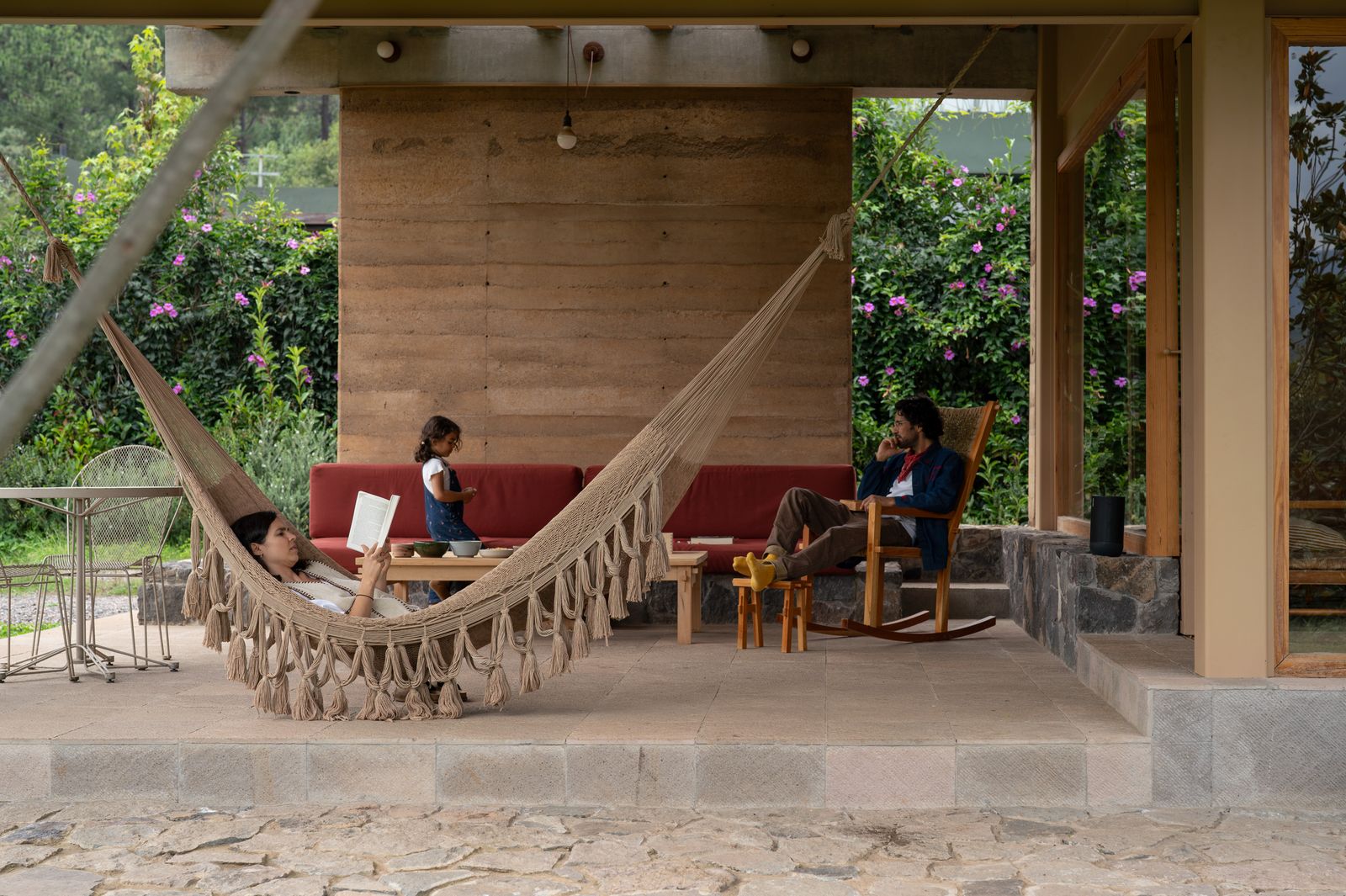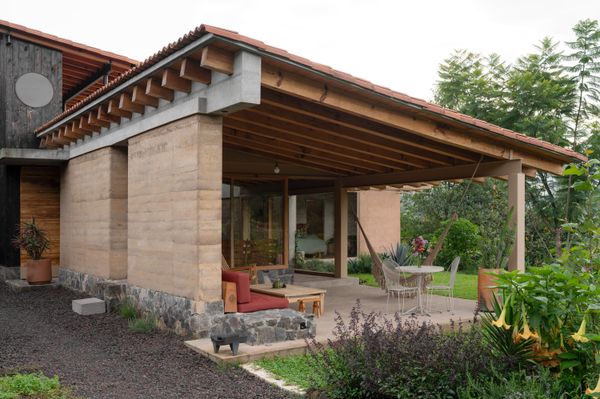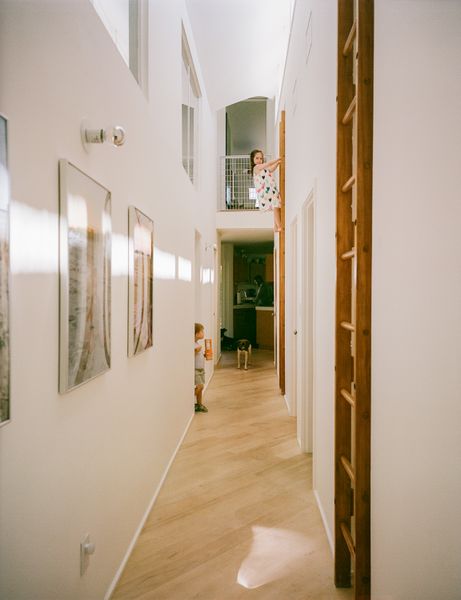Rammed Earth and Cactus Gel Make a Haven for a Family Outside Mexico City
Valle de Bravo was a Covid escape for the couple, but then they decided it was the perfect place to live in nature and raise their kids.

When architectural photographer Camila Cossio and her husband, architect Luis Carbonell, ended up in Valle de Bravo during the pandemic in 2020, they didn’t know the idyllic region surrounding the town—a lakefront retreat two and a half hours west of Mexico City—would become their year-round home. At the time the couple, who were living in the capital and had both done graduate work in New York, were consummate city dwellers. “We loved socializing with friends and were always out and about,” says Camila. Their apartment in Mexico City’s Condesa neighborhood suited their lifestyle. But the arrival of their first child, Juliana, in July 2019, drastically changed things. “Becoming a parent was hard for me. It meant getting away from my friends and the life I knew,” recalls Luis, whose jovial manner makes it easy to imagine him in a hip Condesa bar.

A temporary stay in Valle de Bravo, Mexico, became permanent when photographer Camila Cossio and architect Luis Carbonell decided to forgo city living and build a family home for themselves and their two young daughters in the laid-back retreat.
Photo: Fabian Martinez
Further disrupting the family’s rhythm was the extended Covid standstill. At first, Valle—as everyone calls the town, and where Camila’s parents own a weekend home—was a temporary refuge where they could wait for the world to go back to normal. But soon it became clear that lockdown had upended norms permanently. “No one used to live here. It was a weekend destination,” says the soft-spoken Camila. “That shifted, and more people were leaving the city to move here full-time.” A big incentive to settle in Valle was a renowned Waldorf school in the area. “We were drawn by this idea to dedicate ourselves to a life centered around parenting. Finding a friendly, family-oriented community and a great school convinced us to stay,” says Luis. He and Camila looked for land, finding their dream site in the suburb of Acatitlán in 2022.

Designed by Luis, the house flows openly to the outdoors. Materials on the roof include concrete, flat clay tiles, curved terra-cotta tiles, steel, and glass. “This project is all about layering—juxtaposing techniques, materials, and textures,” says Luis. The charred wood on the second-story facade is a twist on traditional yakisugi. “Instead of cedar, it’s made of reclaimed wood from pallets used to ship cars across the Atlantic,” says the architect.
Photo: Fabian Martinez
There are bigger plots in Valle—historically a getaway of the capital’s elite—than the 12,900-square-foot parcel Luis and Camila picked, but not many are nestled next to Monte Alto, a towering-oak-filled state park, or have views of the Nevado de Toluca, one of Mexico’s highest volcanic peaks. Similarly, more extravagant houses exist than the one they started building for themselves in early 2023, but few as tailored to a particular family and their idea of kid-focused domesticity. (The couple’s second daughter, Josefa, was born in October of the same year, just months before they moved into the new home.)

The table and stools are by the couple’s friend and collaborator Marissa Naval of Casa Naval. In the dining room, rustic mismatched pieces create a warm setting. “Most of the furniture is a mix of items from old collections found at flea markets, inherited from family, or repurposed from past projects,” says Luis.
Photo: Fabian Martinez
See the full story on Dwell.com: Rammed Earth and Cactus Gel Make a Haven for a Family Outside Mexico City
Related stories:




















































